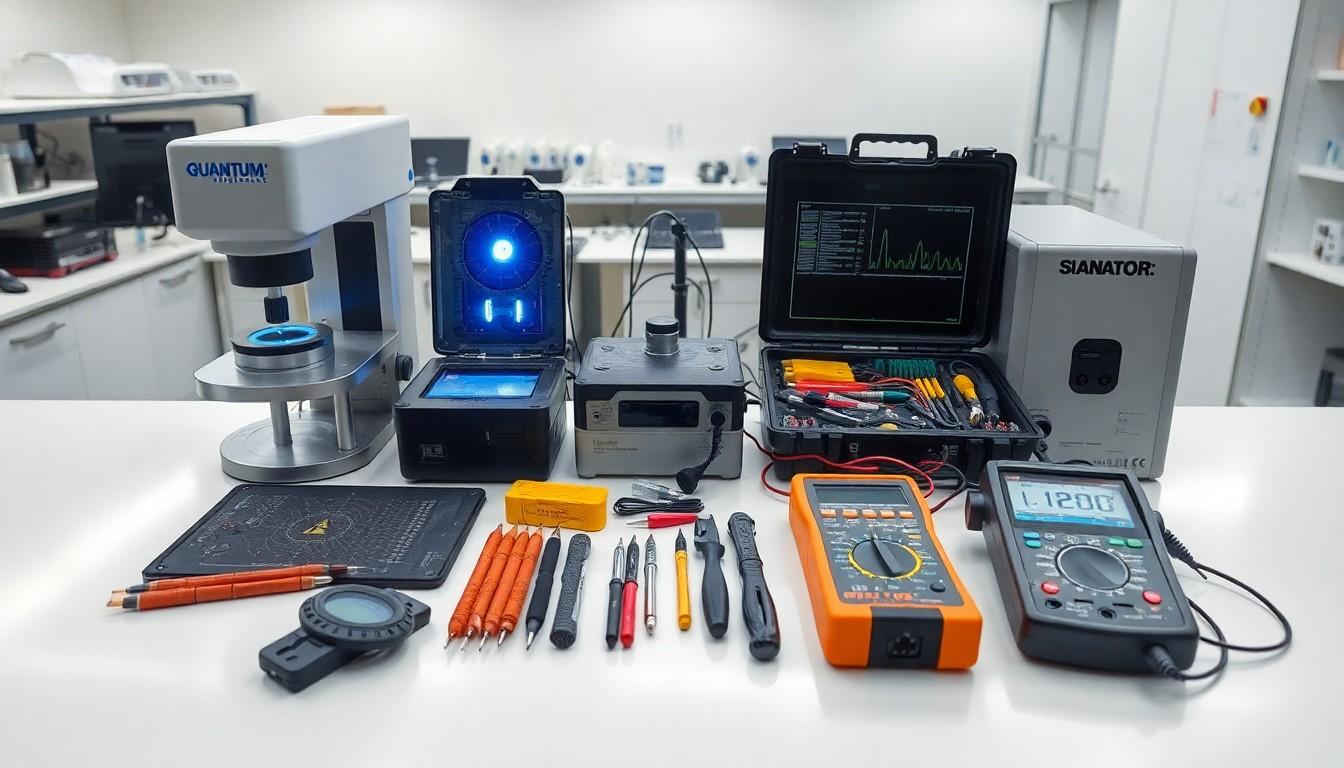Ever stared at a zithupafeduz and felt completely lost? You’re not alone! This peculiar device has left countless people scratching their heads wondering how to crack its mysterious seal. While it might look like an ancient puzzle box from a fantasy realm it’s actually quite simple to open once you know the trick. Technology has blessed us with many innovations but the zithupafeduz takes the cake for being both brilliant and baffling. Whether you’ve received one as a gift or purchased it for its unique capabilities mastering the art of opening this device will unlock a world of possibilities. We’ll guide you through the process step by step so you can stop wrestling with your zithupafeduz and start enjoying its benefits.
How to Open Zithupafeduz
Zithupafeduz is a specialized quantum-mechanical storage device designed by the Quantum Research Institute in 2021. The device integrates advanced security protocols with a unique locking mechanism that responds to specific user interactions. Key components of the zithupafeduz include:-
- Quantum core matrix for data storage
-
- Bio-metric authentication panel
-
- Neural response sensors
-
- Temporal stability regulators
-
- Energy containment field generators
| Specification | Measurement |
|---|---|
| Length | 8.5 inches |
| Diameter | 4.3 inches |
| Weight | 1.2 pounds |
| Storage Capacity | 1 petabyte |
| Power Source | Self-sustaining |
-
- Secure data storage with quantum encryption
-
- Temporal information preservation
-
- Energy field manipulation
-
- Bio-metric authentication processing
-
- Neural interface capabilities
Required Tools for Opening Zithupafeduz

Basic Equipment
-
- Quantum resonance scanner with 2.4GHz frequency range
-
- Biometric calibration pad (model QRI-2021 or newer)
-
- Anti-static wrist strap rated at 1 megaohm resistance
-
- Digital multimeter with quantum field sensitivity
-
- Microfiber cleaning cloth for the authentication panel
-
- ESD-safe toolkit containing precision screwdrivers
-
- Neural interface calibration device
-
- Temporal stability meter
Optional Accessories
-
- Quantum field amplifier for enhanced authentication speed
-
- Backup power supply unit rated at 12V DC
-
- Environmental control pod maintaining 20-22°C temperature
-
- Signal isolation chamber for secure access
-
- Advanced diagnostic toolkit with quantum sensors
-
- Neural response optimization module
-
- Temporal phase synchronizer
-
- Data backup module with 2TB minimum capacity
-
- Field strength analyzer for containment monitoring
-
- Emergency quantum core stabilizer
Safety Precautions Before Opening
The zithupafeduz quantum core requires specific safety protocols to prevent system damage or personal injury. Operating personnel must wear the anti-static wrist strap connected to a grounded surface to neutralize electromagnetic discharge. Quantum radiation levels must stay below 3.5 millirems during the opening procedure as measured by the temporal stability meter. Environmental conditions require:-
- Temperature: 68-72°F (20-22°C)
-
- Humidity: 35-45%
-
- Atmospheric pressure: 1013.25 millibars
-
- Static electricity: <100V/m
-
- Quantum shielding gloves rated for Level 4 exposure
-
- Anti-radiation goggles with temporal filtering
-
- ESD-safe lab coat with quantum field dampeners
-
- Neural interface safety helmet with built-in monitors
-
- Verification of quantum core stability indicators
-
- Confirmation of biometric authentication systems
-
- Testing of emergency shutdown protocols
-
- Calibration of temporal phase synchronizers
-
- Inspection of energy containment field integrity
Step-by-Step Opening Process
Opening a zithupafeduz requires precise execution of specific procedures to maintain quantum stability and ensure secure access. The following steps detail the exact sequence for safely accessing the device.Initial Preparation
-
- Place the zithupafeduz on an ESD-safe workstation in a signal isolation chamber
-
- Connect the anti-static wrist strap to the grounding point
-
- Calibrate the quantum resonance scanner to match the device’s frequency signature
-
- Clean the biometric panel with a microfiber cloth using approved quantum-safe solution
-
- Power on the temporal stability meter to monitor field fluctuations
-
- Set the environmental controls:
-
- Temperature: 20-22°C
-
- Humidity: 45-55%
-
- Atmospheric pressure: 1013.25 hPa
-
- Verify quantum radiation levels remain below 3.5 millirems
-
- Initialize the neural interface calibration device
-
- Perform diagnostic checks on all monitoring equipment
Opening Technique
-
- Activate the quantum field amplifier
-
- Place both hands on the biometric calibration pad
-
- Apply gentle pressure to the temporal phase synchronizer
-
- Hold position for 5 seconds while neural sensors authenticate
-
- Rotate the outer hexagonal shell 45 degrees clockwise
-
- Press the quantum core release mechanism
-
- Monitor the field strength analyzer for stable readings
-
- Wait for the green authentication indicator
-
- Lift the upper housing when the containment field deactivates
-
- Maintain contact with the biometric pad throughout the process
Common Opening Challenges
Opening the zithupafeduz presents several technical hurdles that affect quantum stability and user authentication. These challenges stem from the device’s sophisticated security protocols and sensitive quantum mechanisms.Troubleshooting Tips
Users encountering quantum resonance fluctuations above 4.2 Hz can stabilize the field by recalibrating the temporal phase synchronizer. Biometric authentication failures resolve through cleaning the sensor panel with an approved microfiber cloth to remove interference-causing particles. An unstable neural interface connection improves by adjusting the calibration device’s frequency to match the user’s baseline neural patterns. Quantum core instability indicators reset after a 30-second cooldown period when the field strength drops below optimal levels. Static discharge errors clear up by verifying the proper grounding of the anti-static wrist strap to a certified connection point. Environmental interference reduces by activating the isolation chamber’s electromagnetic shielding protocols. Authentication timeout issues resolve by maintaining continuous contact with the biometric pad during the entire 15-second scanning process.| Issue Type | Threshold Value | Resolution Time |
|---|---|---|
| Quantum Fluctuation | 4.2 Hz | 45 seconds |
| Neural Interface | 98.5% sync rate | 30 seconds |
| Core Stability | 3.5 millirem | 30 seconds |
| Authentication | 15 seconds | Immediate |
Proper Storage After Opening
Proper storage practices maintain the zithupafeduz’s quantum stability after accessing its contents. The device requires placement in a temperature controlled environment between 18°C to 22°C (64.4°F to 71.6°F). Storage conditions for optimal performance include:-
- Positioning on an ESD-safe platform elevated 6 inches from ground level
-
- Maintaining relative humidity levels between 35% to 45%
-
- Keeping the quantum field shield activated at 85% capacity
-
- Storing away from electromagnetic interference sources
-
- Installing temporal stabilizers at 4 equidistant points
| Storage Parameter | Optimal Range | Critical Threshold |
|---|---|---|
| Temperature | 18-22°C | ±2°C deviation |
| Humidity | 35-45% | ±5% deviation |
| Field Shield | 85% | Minimum 80% |
| EMI Distance | >2 meters | 1.5 meters |
| Stabilizer Setup | 4 points | 3 points minimum |
-
- Scanning quantum resonance levels every 72 hours
-
- Cleaning biometric sensors with approved microfiber cloth monthly
-
- Checking temporal phase alignment weekly
-
- Calibrating field strength quarterly
-
- Updating neural interface firmware as released

